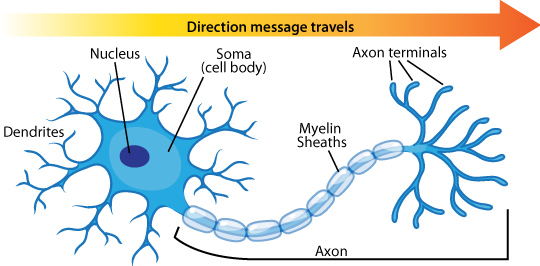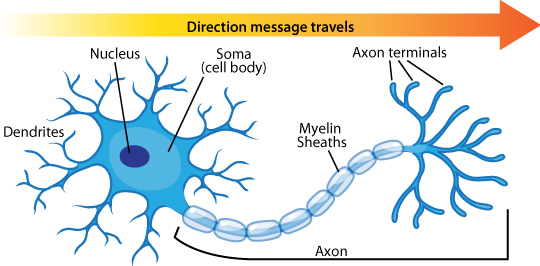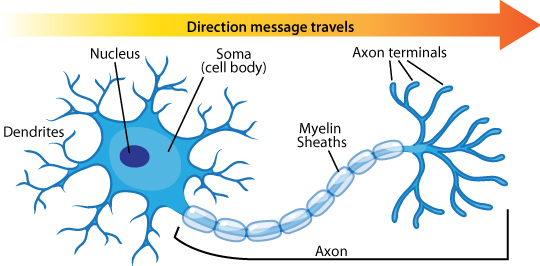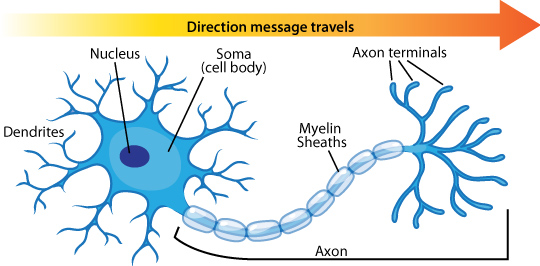AP PSYCH ALL VOCAB
1/550
Earn XP
Name | Mastery | Learn | Test | Matching | Spaced |
|---|
No study sessions yet.
551 Terms
critical thinking
thinking that does not blindly accept arguments and conclusions. Rather, it examines assumptions, appraises the source, discerns hidden biases, evaluates evidence, and assesses conclusions
Socrates and Plato
teacher/student duo that concluded that mind is separable from body and continues after the body dies, and that knowledge is innate (born within us)
Aristotle
Plato’s student whose views were different. Aristotle derived principles from careful observations and said knowledge is NOT preexisting
empiricism
the idea that knowledge comes from experience, and that observation and experimentation enable scientific knowledge
William Wundt
in 1879, Wundt and a couple of other scientists at Germany’s University of Leipzig created a machine that measured how long it took for people to press a telegraph key after hearing a ball hit a platform. People responded in about 1/10 a second when asked to press the key as soon as the sound occurred–and in about 2/10 of a second when asked to press the key as soon as they were consciously aware of perceiving the sound
Edward Bradford Titchener (1867-1927)
used introspection to search for the mind’s structural elements
structuralism
an early school of thought promoted by Wundt and Titchener; used introspection to reveal the structure of the human mind
introspection
the process of looking inward in an attempt to directly observe one’s own psychological processes. Unfortunately, the technique proved unreliable. It required smart, verbal people, and its results varied greatly from person to person
functionalism
an early school of thought promoted by William James and influenced by Darwin; explored how mental and behavioral processes function–how they enable the organism to adapt, survive, and flourish
William James (1842-1910)
teacher/writer who authored an important psychology textbook
Mary Whiton Calkins
pioneering memory researcher who mentored under William James. She was the first woman to be president of the American Psychological Association
Margaret Floy Washburn
first official female to receive a psychology Ph.D. She also wrote the book, The Animal Mind and became the second female APA president in 1921.
behaviorism
the view that psychology (1) should be an objective science that (2) studies behavior without reference to mental processes. Most psychologists today agree with (1) but not with (2)
John B. Watson (1878-1858)
championed psychology as the scientific study of behavior. In a controversial study on a baby who became famous as “Little Albert,” he and coworker Rosalie Rayer showed that fear could be learned
Sigmund Freud’s psychoanalytic theory
emphasized the ways our unconscious mind and childhood experiences affect our behavior
B.F. Skinner
behaviorist who rejected introspection and studied how consequences shape behavior
humanistic psychology
a historically significant perspective that emphasized human growth potential, led by Carl Rogers and Abraham Maslow (they developed humanistic psych cause they thought behaviorism and Freudian psychology were too limiting)
cognitive psychology
the study of mental processes, such as occur when we perceive, learn, remember, think, communicate, and solve problems
cognitive neuroscience
the combination of cognitive psychology and neuroscience, it is the study of the brain activity linked with cognition (including perception, thinking, memory, and language)
psychology
the science of behavior and mental processes
nature-nurture issue
the longstanding controversy over the relative contributions that genes and experience make to the development of psychological traits and behaviors. Today’s science sees traits and behaviors arising from the interaction of nature and nurture
natural selection
the principle, argued by Charles Darwin, that inherited traits that better enable an organism to survive and reproduce in a particular environment will (in combination with other trait variations) most likely be passed on to succeeding generations.
evolutionary psychology
the study of the evolution of behavior and the mind, using principles of natural selection. Ex. evolutionary psychology asks ‘How are we humans alike because of our common biology and evolutionary history?’
behavior genetics
the study of the relative power and limits of genetic and environmental influences on behavior
culture
the enduring behaviors, ideas, attitudes, values, and traditions shared by a group of people and transmitted from one generation to the next
positive psychology
the scientific study of human flourishing, with the goals of discovering and promoting strengths and virtues that help individuals and communities to thrive
biopsychosocial approach
an integrated approach that incorporates biological, psychological, and social-cultural viewpoints
behavioral psychology
the scientific study of observable behavior, and its explanations by principles of learning
biological psychology
the scientific study of the links between biological (genetic, neural, hormonal) and psychological processes
psychodynamic psychology
a branch of psychology that studies how unconscious drives and conflicts influence behavior and uses that information to treat people with psychological disorders
social-cultural psychology
the study of how situations and cultures affect our behavior and thinking
testing effect
enhanced memory after retrieving, rather than simply rereading information
SQ3R
a study method incorporating 5 steps: Survey, Questions, Read, Retrieve, Review
psychometrics
the scientific study of the measurement of human abilities, attitudes, and traits
basic research
pure science that aims to increase the scientific knowledge base
developmental psychology
a branch of psychology that studies our changing abilities from birth to death
educational psychology
the study of how psychological processes affect and can enhanced teaching and learning
personality psychology
the study of individuals’ characteristic patterns of thinking, feeling, and acting
social psychology
the scientific study of how we that about, influence, and relate to others
applied research
the scientific study that aims to solve practical problems
Industrial-organization (I/O) psychology
the application of psychological concepts and methods to optimizing human behavior in workplaces
Human factors psychology
a field of psychology allied with I/O psychology that explores how people and machines interact and how machines and physical environments can be made safe
counseling psychology
a branch of psychology that assists people with problems in living (often related to school, work, or marriage) and in achieving greater well-being
clinical psychology
a branch of psychology that studies, assesses, and treats people with psychological disorders
psychiatry
a branch of medicine dealing with psychological disorders; practiced by physicians who are licensed to provide medical treatments as well as psychological therapy
community psychology
a branch of psychology that studies how people interact with their social environments and how social institutions affect individuals and groups
hindsight bias
the tendency to believe, after learning an outcome, that one would have foreseen it (aka I knew it all along phenomenon)
overconfidence
the tendency to exaggerate the correctness or accuracy of our beliefs and predictions
theory
an explanation using an integrated set of principles that organizes observations and predicts behaviors or events
scientific method
a self correcting process for evaluating ideas with observation and analysis
hypothesis
a testable prediction, often implied by a theory
operational definition
a carefully worded statement of the exact procedures (operations) used in a research study. For example, human intelligence may be operationally defined as what an intelligence test measures.
replication
repeating the essence of a research study, usually with different participants in different situations, to see whether the basic finding can be reproduced
case study
a descriptive technique in which one individual or group is studied in depth in the hope of revealing universal principles
naturalistic observation
a descriptive technique of observing and recording behavior in naturally occurring situations without trying to manipulate or control the situation
survey
a descriptive technique for obtaining the self-reported attitudes or behaviors of a particular group, usually by questioning a representative, random sample of the group
sampling bias
a flawed sampling process that produces an unrepresentative sample
population
all those in a group being studied, from which samples may be drawn
random sample
a sample that fairly represents a population because each member has an equal chance of being selected
correlation
a measure of the extent to which two factors vary together, and thus of how well either factor predicts the other
correlation coefficient
a statistical index of the relationship between two things (from -1.00 to +1.00). The closer the score gets to -1 or +1, the stronger the correlation
variable
anything that can vary and is feasible and ethical to measure
illusory correlation
perceiving a relationship where none exists, or perceiving a stronger-than-actual relationship. Ex. Gamblers, remembering their lucky rolls, may come to believe they can influence the roll of the dive by again throwing gently for low numbers and hard for high numbers
Regression toward the mean
the tendency for extreme or unusual scores or events to fall back (regress) toward the average
experiment
a research method in which an investigator manipulates one or more factors (independent variables) to observe the effect on some behavior or mental process (the dependent variable)
experimental group
in an experiment, the group exposed to the treatment
control group
in an experiment, the group NOT exposed to the treatment
random assignment
assigning participants to experimental and control groups by chance, thus minimizing preexisting differences between the different groups
double-blind procedure
an experimental procedure in which both the research participants and the research staff are ignorant (blind) about whether the research participants have received the treatment or a placebo. Commonly used in drug-evaluation studies
placebo effect
experimental results caused by expectations alone; any effect on behavior caused by the administration of an inert substance or condition, which the recipient assumes is active
independent variable
in an experiment, the factor that is manipulated; the variable whose effect is being studied
confounding variable
a factor other than the factor being studied that might influence the results
dependent variable
in an experiment, the outcome that is measured; the variable that may change when the independent variable is manipulated
validity
the extent to which a test or experiment measures or predicts what it's supposed to
informed consent
giving potential participants enough information about a study to enable them to choose whether they wish to participate
debriefing
the post experimental explanation of a study, including its purpose and any deceptions, to its participants
descriptive statistics
numerical data used to measure and describe characteristics of groups. Includes measures of central tendency and measures of variation
histogram
a bar graph depicting a frequency distribution
mode
the most frequently occurring scores in a distribution. Ex. the mode is 3 in the distribution 1 9 4 3 8 3 6 7 3
mean
the arithmetic average of a distribution, obtained by adding the scores and then diviging by the number of the scores. The mean is 6 in the distribution 6 3 4 9 1 2 8 3
median
the middle score in a distribution; half the scores are above it and half are below it. Ex. The median is 5 in the distribution 1 3 4 5 7 8 9
skewed distribution
a representation of scores that lack symmetry around their average value. Ex. the average salary of customers in a non expensive cafe might be $80k, but if Bill Gates walks in, then the distribution would be skewed since he's a billionaire.
range
the difference between the highest and lowest scores in a distribution
standard deviation
a computed measure of how much scores vary around the mean score
normal curve
(normal distribution) a symmetrical, bell shaped curve that describes the distribution of many types of data; most scores fall near the mean (about 68% fall within one standard deviation of it) and fewer and fewer near the extremes
inferential statistics
numerical data that allow one to generalize–to infer from sample data the probability of something being true of a population
statistical significance
a statistical statement of how likely it is that an obtained result occurred by chance
neuron
a nerve cell

cell body
the part of a neuron that contains the nucleus; the cell’s life-support center

dendrites
a neuron’s often bushy, branching extensions that receive and integrate messages, conducting impulses toward the cell body

axon
the neuron extension that passes messages through its branches to other neurons or to muscles or glands

myelin sheath
a fatty tissue layer segmentally encasing the axons of some neurons; enables vastly greater transmission speed as neural impulses hop from one node to the next

glial cells
cells in the nervous system that support, nourish, and protect neurons; they also play a role in learning, thinking, and memory
action potential
a neural impulse; a brief electrical charge that travels down an axon
threshold
the level of stimulation required to trigger a neural impulse
refractory period
in neural processing, a brief resting pause that occurs after a neuron has fired; subsequent action potentials cannot occur until the axon returns to its resting state
all-or-none response
a neuron’s reaction of either firing (with full-strength) or not firing
synapse
the junction between the axon tip of the sending neuron and the dendrite or cell body of the receiving neuron. The tiny gap at this junction is called the synaptic gap or synaptic cleft
neurotransmitters
chemical messengers that cross the synaptic gaps between neurons. When released by the sending neuron, neurotransmitters travel across the synapse and bind to receptor sites on the receiving neuron, thereby influencing whether that neuron will generate a neural impulse
reuptake
a neurotransmitter’s reabsorption by the sending neuron